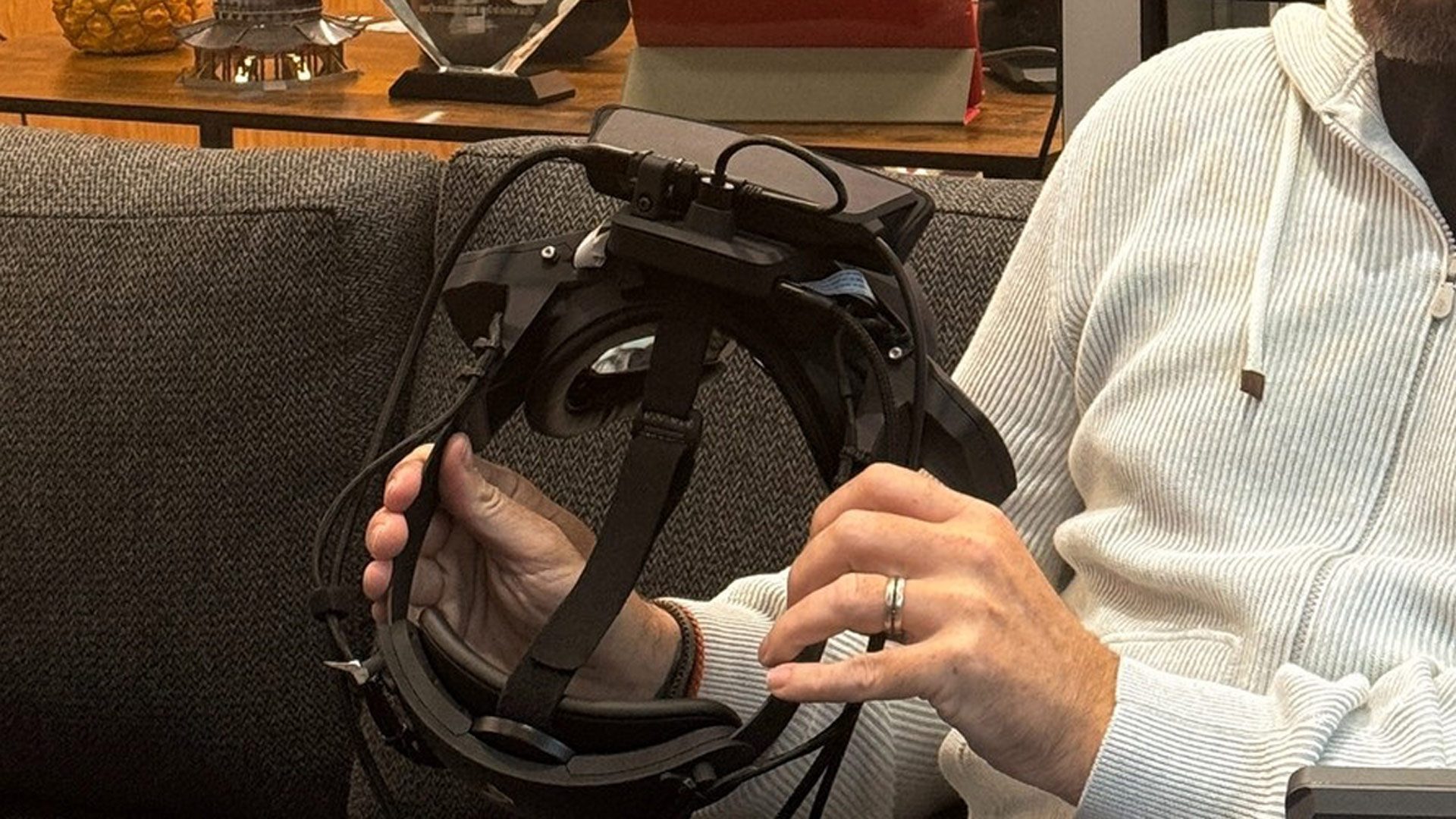Meta CTO Andrew Bosworth revealed last week a mysterious wide field-of-view (FOV) headset prototyped in the Redmond, Washington-based Reality Labs offices. Bosworth now reveals the research prototype had something close to a 210-degree FOV, however wide FOV displays are a critical tradeoff the company isn’t ready to make.
And if you were hoping this was the wide FOV Quest yet to come, you’ll probably be disappointed. Bosworth revealed in a recent Instagram Q&A the device is actually a mixed reality headset, however he tempered expectations by calling the prototype “very, very, very low resolution,” which notably featured “giant gaps in the display where there was no image at all.”
Bosworth intimated Meta won’t be chasing after such a wide FOV because there are simply too many conflicting tradeoffs.
“I know how much ya’ll love field-of-view and want more. I’m with you. I like it. I get it, I do. The tradeoffs are so bad. The tradeoffs on weight, form factor, compute, thermals… it’s all bad,” Bosworth said in the Q&A.

Enthusiast-grade, wide FOV PC VR headsets like Pimax Crystal Light ($699), Pimax Crystal Super QLED ($1,799), and Somnium VR1 (€1,900/$2,050) don’t need to worry about those things as much, as they rely on dedicated GPUs and typically don’t need to fit into the sort of tight compute and power envelopes as Quest. And as we know, Meta doesn’t produce PC VR-only headsets anymore either.
Bosworth boils it down to price, since producing a significantly larger FOV in a standalone beyond the typical 110-degree horizontal increases the costs of all associated components.
“Field-of-view is one of the most expensive things you can add to a headset. And by definition, and all that cost—that quadratic cost—is going to the least important pixels,” Bosworth said, referring the display’s periphery.
Even so, Meta doesn’t seem ready to revisit higher price points just yet—at least not after retiring Quest Pro, which released only two years ago for an eye-watering $1,500 before being reduced to $1,000 less than a year after launch. In the near-term, the company is pinning its hopes on the most affordable mixed reality standalone yet, Quest 3S.
“It’s a really tough trade to embrace. We care about field-of-view, and that’s why we do this research. We look at different ways to approach it, and attack it, and make it cheaper […] and more affordable, and not make it so expensive,” Bosworth said.
Summing up the subject on wide FOV headsets, Bosworth maintains “there is a practical reason that we end up in the space that we do.”
The prototype was developed by the company’s Display Systems Research (DSR) team led by Doug Lanman, who is also known for his work on varifocal prototypes. In 2020, DSR said its then-latest varifocal prototype, which featured static varifocal displays and folded optics, was “almost ready for primetime.” The team also showed off display prototypes capable of higher display ranges, providing better contrast for more immersive visuals. None of those technologies have made it out of the lab yet.
Instead, Meta appears to be continuing its march to reach the masses with mixed reality, acting as the lower-cost foil to Apple’s $3,500 Vision Pro—an emerging XR competition with battle lines that are still unclear.
– – — – –
A recent report from The Information maintains Meta may launch a Quest 4 sometime in 2026, which will give us a better idea of how Apple hopes to respond to similar reports of a cheaper follow-up to Vision Pro, reportedly coming sometime in late 2025.







